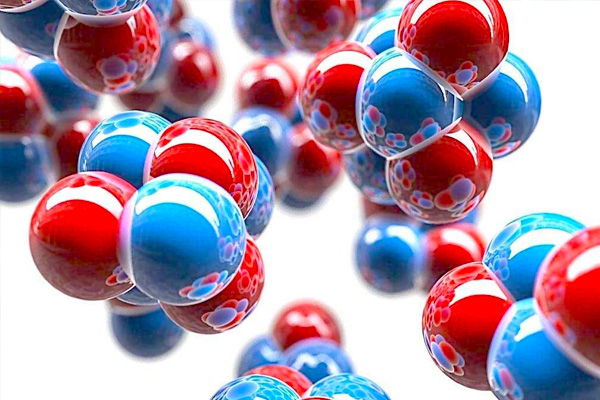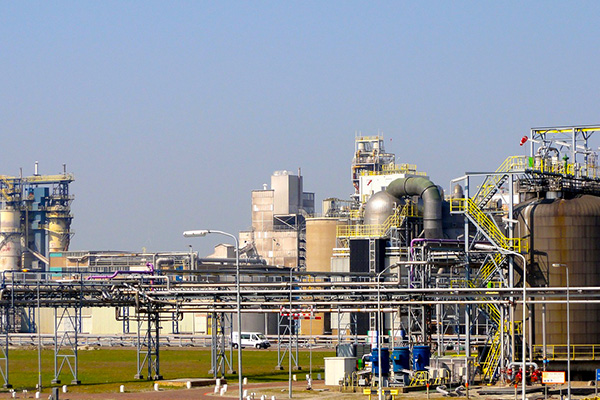Phân Loại Và Ứng Dụng Của Nguyên Liệu Hóa Học - Từ Cơ Bản Đến Phân Tích Sâu
Trong ngành công nghiệp hiện đại, nguyên liệu hóa học chơi một vai trò quan trọng. Là nền tảng của sản xuất hóa học, chúng được sử dụng rộng rãi trong dược phẩm, nông nghiệp, nhựa, thực phẩm và các lĩnh vực khác. Nguyên liệu hóa học có thể được chia thành nhiều loại khác nhau dựa trên nguồn gốc, quy trình sản xuất và tình huống ứng dụng. Bài viết này sẽ phân tích sâu từ phân loại cơ bản đến ứng dụng thực tế để giúp bạn hiểu toàn diện về nền tảng công nghiệp này.
I. Phân loại cơ bản của nguyên liệu hóa học
Nguyên liệu hóa học chủ yếu được chia thành hai loại theo nguồn gốc vật liệu: nguyên liệu hóa học hữu cơ và nguyên liệu hóa học vô cơ.
1. Nguyên liệu hóa học hữu cơ
Hợp chất chứa carbon là đặc điểm cốt lõi, với cấu trúc phân tử phức tạp và phạm vi ứng dụng rộng rãi. Các loại phổ biến bao gồm:
Hydrocacbon no và các dẫn xuất của chúng (chẳng hạn như metan và etan): dùng làm nhiên liệu và tổng hợp hóa học.
Olefin và các dẫn xuất của chúng (chẳng hạn như etilen và propylen): nguyên liệu thô cho nhựa và cao su tổng hợp.
Aldehyd, cồn, keton : dùng làm dung môi, hương liệu và trung gian dược phẩm.
Phenol, ête : chất xúc tác hoặc dung môi trong phản ứng hóa học.
Axit hữu cơ và carbohydrat (chẳng hạn như axit acetic và glucose): thành phần chính trong ngành thực phẩm và dược phẩm.
Đặc điểm ứng dụng : Bao phủ hầu hết các lĩnh vực hóa học, là nền tảng của vật liệu cao cấp và hóa chất tinh khiết.

2. Nguyên liệu hóa học vô cơ
Chất hóa học không chứa carbon chủ yếu được chiết xuất từ khoáng sản, không khí hoặc nước. Các loại điển hình bao gồm:
Các khoáng chất như lưu huỳnh, natri, photpho, kali và canxi: cơ sở cho việc sản xuất các sản phẩm công nghiệp như phân bón và chất tẩy rửa.
Than đá, dầu mỏ và khí天然气: vừa là nguồn năng lượng vừa là nguyên liệu quan trọng cho ngành công nghiệp hóa học .
Khí thải và nước thải (như dioxide lưu huỳnh và khí lò than): có thể được chuyển hóa thành các sản phẩm có giá trị như sunfat amoni sau khi tái chế.
Xu hướng ứng dụng: Mở rộng từ các ngành công nghiệp truyền thống sang công nghệ bảo vệ môi trường, thúc đẩy sự phát triển của hóa học xanh.

II. Phân loại dựa trên quy trình sản xuất
Theo vai trò của quy trình sản xuất, nguyên liệu hóa học có thể được chia thành nguyên liệu khởi điểm, nguyên liệu cơ bản và nguyên liệu trung gian.
1. Nguyên liệu thô ban đầu
Điểm "bắt đầu" của sản xuất hóa học chủ yếu là các nguồn tài nguyên thiên nhiên:
Không khí, nước và nhiên liệu hóa thạch: những nhu cầu thiết yếu cho các phản ứng hóa học.
Khoáng sản và sản phẩm nông nghiệp (chẳng hạn như muối biển và gỗ): cung cấp nguồn tự nhiên của các thành phần hữu cơ/tiêu cực.
2. Nguyên liệu thô cơ bản
Các sản phẩm từ quá trình xử lý ban đầu của nguyên liệu thô hỗ trợ cho việc sản xuất tiếp theo:
Carbua canxi, clorua natri: được sử dụng để tổng hợp hóa chất hữu cơ, polymer và phân bón.
Các sản phẩm chưng cất dầu mỏ (như etylen, propylen): nguyên liệu chính cho nhựa và sợi tổng hợp.
3. Nguyên liệu trung gian (intermediates)
"Sản phẩm chuyển đổi" trong chuỗi sản xuất cần được chế biến thêm thành sản phẩm cuối cùng:
Methanol, acetone, vinyl chloride: được sử dụng cho các phản ứng trung gian trong ngành nhuộm, nhựa, dược phẩm và các lĩnh vực khác.

III. Lĩnh vực ứng dụng cốt lõi của nguyên liệu hóa học
1. Công nghiệp dược phẩm
Trung gian hữu cơ (như vinyl chloride, aldehydes) là chìa khóa cho việc tổng hợp thuốc và hỗ trợ nghiên cứu và phát triển kháng sinh, vắc xin, v.v.
2. Lĩnh vực nông nghiệp
Nguyên liệu vô cơ (phốt pho kali, phân bón đạm) kết hợp với thuốc trừ sâu hữu cơ thúc đẩy cải tạo đất và tăng năng suất cây trồng.
3. Nhựa và sợi tổng hợp
Olefins dựa trên dầu mỏ (etylen, benzen) là nguồn vật liệu quan trọng cho ngành bao bì, xây dựng, dệt may và các ngành công nghiệp khác.
4. Công nghiệp thực phẩm
Axit hữu cơ (như axit acetic) và carbohydrat (như lactose) được sử dụng rộng rãi trong chất phụ gia thực phẩm và xử lý.

IV. Xu hướng tương lai: Hóa học xanh và Phát triển Bền vững
Dưới sự thúc đẩy của nhu cầu bảo vệ môi trường toàn cầu, ngành nguyên liệu hóa học đang đẩy nhanh quá trình chuyển đổi:
Quy trình xanh: giảm phát thải ô nhiễm và phát triển công nghệ sản xuất ít carbon.
Chu trình tài nguyên: tái chế hiệu quả khí thải và nước thải (chẳng hạn như CO₂ thành methanol).
Nguyên liệu sinh học: thay thế nguồn tài nguyên hóa thạch bằng sinh khối tái tạo (chẳng hạn như nhựa phân hủy sinh học).
Vật liệu thông minh: sự trỗi dậy của các ứng dụng sáng tạo như vật liệu nano và polymer chức năng.
Phần kết luận
Nguyên liệu hóa học là "nhà khuyến mãi vô hình" của nền văn minh công nghiệp, và việc phân loại cũng như ứng dụng của chúng đi xuyên suốt mọi khâu của sản xuất hiện đại. Từ khoáng chất cơ bản đến phân tử hữu cơ phức tạp, từ ngành công nghiệp truyền thống đến công nghệ xanh, lĩnh vực này không ngừng thúc đẩy sự tiến bộ công nghệ và phát triển bền vững của xã hội loài người. Trong tương lai, với sự kết hợp của sinh học và sản xuất thông minh, tiềm năng của nguyên liệu hóa học sẽ còn sâu rộng hơn nữa.


 EN
EN
 AR
AR
 BG
BG
 HR
HR
 CS
CS
 DA
DA
 NL
NL
 FI
FI
 FR
FR
 DE
DE
 EL
EL
 HI
HI
 IT
IT
 JA
JA
 KO
KO
 NO
NO
 PL
PL
 PT
PT
 RO
RO
 RU
RU
 ES
ES
 SV
SV
 TL
TL
 IW
IW
 ID
ID
 LV
LV
 LT
LT
 SR
SR
 SK
SK
 VI
VI
 HU
HU
 TH
TH
 TR
TR
 GA
GA
 CY
CY
 KA
KA
 LA
LA
 MN
MN
 KK
KK
 LB
LB

